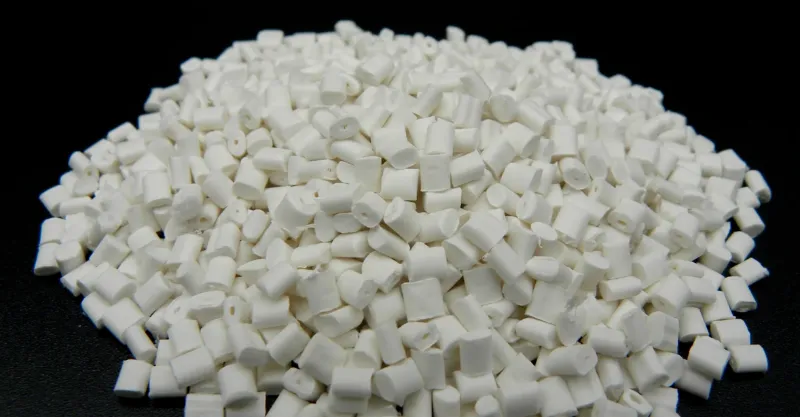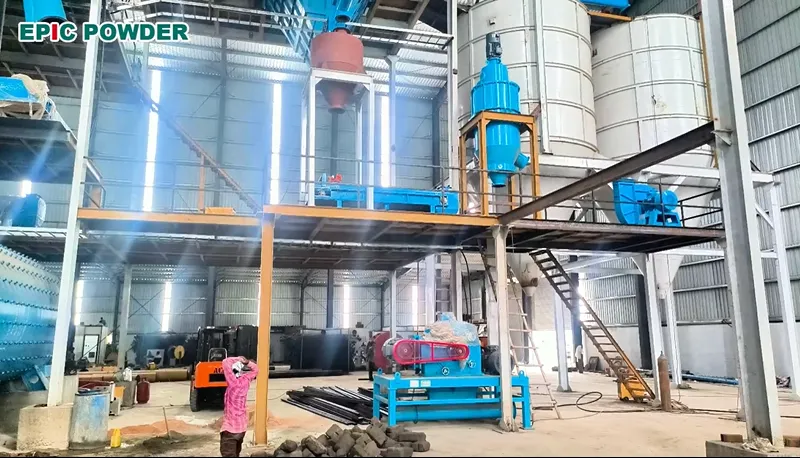In the history of the plastics industry, calcium carbonate has long been regarded as a low-cost filler, valued mainly for reducing raw material costs. However, with breakthroughs in processing technology and the evolution of application demands, this traditional perception is being completely redefined. Today, calcium carbonate has transformed into a functional modifier that combines three key advantages — cost reduction, light weighting, and performance enhancement — driving the plastic composites industry into a new era of innovation.

Technological Breakthroughs: Unlocking the “Modification Genes” of Calcium Carbonate
The leap from “filling” to “modifying” calcium carbonate lies in two major technological advances:
Particle Size Control and Surface Treatment
Fine CaCO₃ with particle sizes above 5000 mesh (especially 3000–8000 mesh) can be surface-treated with silane or titanate coupling agents. This treatment forms a stronger interfacial bond with the resin. For example, adding well-modified 8000-mesh calcium carbonate to polypropylene can more than double the notched impact strength. It breaks the long-held trade-off of “adding filler reduces performance.”
Industrialization of Lightweighting Technologies
The emergence of micro-foaming and hollow CaCO₃ technologies has resolved the density issue associated with traditional fillers. By controlling the particle size around 4 μm (≈3000 mesh), calcium carbonate can act as a nucleating agent. It helps refine foam cells. Meanwhile, hollow CaCO₃ has a density as low as 0.7 g/cm³. It can reduce composite density by up to 45%. This meets the lightweight demands in automotive and packaging applications.

Core Value: Three Dimensions of Competitive Advantage
1. Cost Reduction Without Downgrading Quality
In PE film applications, adding 30% calcium carbonate can save over 2.7 million tons of petroleum annually, reducing raw material costs by 15–20%, while also improving stiffness and tear resistance.
2. Lightweight and Efficiency Enhancement
In blown film production, CaCO₃ increases thermal conductivity by up to 3 times, shortens bubble cooling time by nearly 70%, and boosts extruder throughput by 20% or more. Lightweight composites also help lower downstream transportation and processing costs.
3. Functional Customization
Different types of CaCO₃ can be tailored for specific needs:
- 3000-mesh products enable breathable membranes for hygiene materials.
- Nano-calcium carbonate acts as a nucleating agent for improved impact and heat resistance in PP.
- In biodegradable garbage bags, CaCO₃ reduces black smoke emissions by 60% during incineration, meeting environmental regulations.
Future Trends: Toward Greener and Higher-End Applications

As global sustainability and “dual-carbon” goals progress, the role of CaCO₃ in plastics will focus on two major directions:
- Supporting biodegradable plastics — In materials like PE and PBAT, calcium carbonate promotes degradation while lowering raw material costs.
- Advancing high-end applications — In automotive lightweight components and electronic housings, precisely controlled CaCO₃ enables high strength, low VOC, and aging resistance, offering alternatives to traditional engineering plastics.
Conclusion
Epic Powder specializes in advanced calcium carbonate grinding and classification equipment designed for high-precision plastic applications.
Our ball mill and air classifier systems deliver ultra-fine powders with narrow particle size distributions. They also provide excellent surface activation. This ensures CaCO₃ performs not just as a filler but as a true functional modifier. It enhances the performance, sustainability, and competitiveness of modern plastic composites.
Epic Powder — Empowering Plastic Innovation Through Precision Calcium Carbonate Processing.
